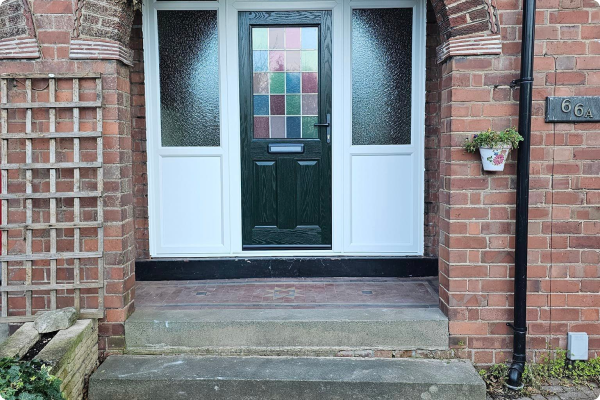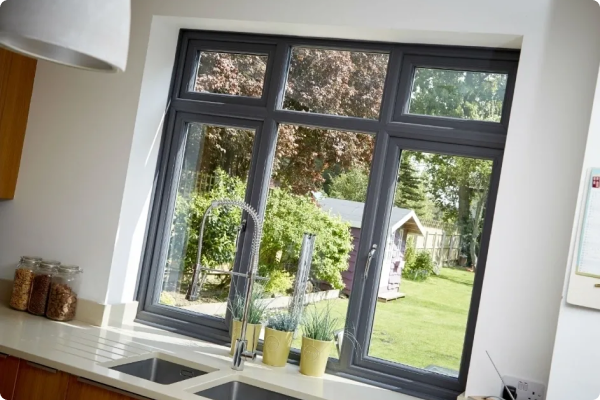When it comes to architectural design, the roof is often one of the most significant elements. Among various roofing options, tiled canopy roofs have gained popularity due to their aesthetic appeal, durability, and ability to enhance outdoor spaces. At Energy Windows, we believe that a well-designed roof can not only protect your home but also elevate its style and functionality. In this blog, we will explore different architectural styles that incorporate tiled canopy roofs, showcasing their versatility and benefits.
What Are Tiled Canopy Roofs?
Tiled canopy roofs are structures that feature tiles made from materials such as clay, ceramic, or concrete. These roofs provide shelter and shade while contributing to the overall aesthetic of a building. The design can vary widely, from simple overhangs to elaborate pergolas adorned with intricate tile patterns. Their ability to blend seamlessly with various architectural styles makes them a favored choice for homeowners and architects alike.
1. Mediterranean Style
The Mediterranean architectural style is characterized by its warm colors, stucco exteriors, and tiled roofs. Tiled canopy roofs in Mediterranean homes often feature terracotta or clay tiles, which help keep interiors cool in hot climates. These roofs not only provide shade for outdoor living spaces but also create an inviting ambiance for gatherings.
Benefits:
- Climate Adaptability: Perfect for warmer regions, they maintain lower interior temperatures.
- Aesthetic Appeal: Enhance the charm of Mediterranean architecture with their rich textures and colors.
2. Spanish Revival Style
Spanish Revival architecture pays homage to the colonial influences of Spain and is often marked by its distinctive arches and decorative tiles. Tiled canopy roofs in this style are typically low-pitched and feature ornate details. These roofs create a dramatic effect, drawing the eye upward and adding to the building’s grandeur.
Benefits:
- Unique Character: Adds historical significance and cultural richness to your home.
- Increased Outdoor Space: Provides a shaded area that can be utilized for outdoor living.
3. Contemporary Style
Contemporary architecture is all about innovation and clean lines. Tiled canopy roofs in contemporary homes often use modern materials and innovative designs, such as oversized tiles or sleek geometric patterns. This style focuses on maximizing natural light and minimizing unnecessary details, creating a fresh and airy feel.
Benefits:
- Modern Aesthetics: Perfect for homeowners looking to embrace minimalism and simplicity.
- Energy Efficiency: Can contribute to lower energy costs when designed with energy-efficient materials.
4. Craftsman Style
Craftsman architecture is known for its handcrafted details, natural materials, and integration with the surrounding landscape. Tiled canopy roofs can enhance the rustic charm of Craftsman homes, offering a touch of elegance without overwhelming the design. Often featuring natural colors and textures, these roofs blend seamlessly with the environment.
Benefits:
- Organic Appeal: Complements natural surroundings and landscaping.
- Durability: Tiled roofs are resistant to weather, making them a long-lasting choice.
5. Asian-Inspired Architecture
Asian-inspired designs, such as Japanese or Chinese architecture, often incorporate tiled roofs that curve gracefully upward. These roofs not only add aesthetic value but also serve practical purposes, such as allowing rainwater to flow away from the building. Tiled canopies in this style often feature intricate tile work and vibrant colors.
Benefits:
- Cultural Significance: Adds a unique touch that reflects cultural heritage.
- Natural Cooling: The design helps regulate indoor temperatures in warm climates.
6. Colonial Style
Colonial architecture emphasizes symmetry and proportion. Tiled canopy roofs can be integrated into Colonial homes to add a touch of elegance and enhance outdoor living areas. Commonly, these roofs feature simple, yet classic designs that align with the home’s overall aesthetic.
Benefits:
- Timeless Elegance: Enhances the traditional look while providing modern functionality.
- Extended Living Space: Offers shaded areas for relaxation and entertainment.
Benefits of Tiled Canopy Roofs Across Styles
No matter the architectural style, tiled canopy roofs provide numerous advantages:
- Aesthetic Versatility: Available in various colors and materials, they can match any design preference.
- Durability: Tiled roofs are known for their longevity and resistance to weather elements.
- Energy Efficiency: Proper insulation and ventilation can help maintain comfortable indoor temperatures.
- Low Maintenance: Once installed, tiled roofs require minimal upkeep compared to other roofing materials.
Choosing the Right Tiled Canopy Roof
When selecting a tiled canopy roof for your home, consider the following:
- Material: Choose tiles made from durable materials like clay, concrete, or ceramic, depending on your climate and aesthetic preferences.
- Design: Work with an architect or designer to ensure that your roof complements your home’s architectural style.
- Functionality: Consider how the canopy will be used—whether for shade, outdoor living, or aesthetic purposes—and design accordingly.
Conclusion
Tiled canopy roofs are a versatile and stylish choice for various architectural styles. From Mediterranean and Craftsman to Contemporary and Asian-inspired designs, these roofs provide both functional and aesthetic benefits. At Energy Windows, we understand the importance of a well-designed roof in enhancing your home’s overall appeal and energy efficiency. If you’re considering a tiled canopy roof for your home, contact us today for expert advice and quality installations. Let us help you create an outdoor space that is both beautiful and functional, providing shade and style for years to come!









